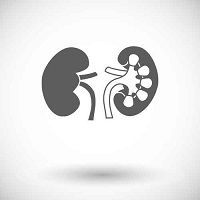Article
Eliminating Kidney Injury from Contrast Media: Monitored Hydration Is Key
Author(s):
The contrast media injected into patients' vascular systems in a heart procedure can cause injuries to the kidneys. That is particularly true for patients with chronic kidney disease. Diluting the effect by hydrating a patient helps, but can risk overloading the heart. Chinese doctors offer a solution.

Central-venous-pressure guided fluid administration can reduce the risk of contrast-induced nephropathy (CIN) in patients with failing hearts and kidneys, a Chinese study found.
In research at the Chinese People’s Liberation Army General Hospital in Peking, China, and its medical school, Geng Qian, MD and colleagues set out to explore ways to safely administer contrast media in patients scheduled to undergo diagnostic cardiac angiography or percutaneous coronary intervention.
The study is published online in JACC: Interventions
Increased hydration was the key, with the process monitored by checking CVP measurements hourly.
Patients all had both congestive heart failure and chronic kidney disease.
The risk of CIN in this group is 25%. But the researchers believed it could be reduced by at least 40% through monitoring central venous pressure. They did better, reducing CIN by 46%.
In the study, the CVP-monitored group got a significantly higher volume of saline solutions, 1,827 ml vs. 1,202 ml in controls.
“Volume expansion with saline reduced CIN by reducing the contrast media concentration [and resulted in] suppression of the renin-angiotensin-aldosterone system and down-regulation of tubuloglomerular feedback, dilution of contrast media within the tubular lumen,” they wrote.
They advise that “hydration volume should be commensurate to the risk of CIN,” and that the risk can be reduced by maintenance of constant intravascular volume.
There is always concern that CHF patients’ hearts will be stressed by high rates of fluid administration. But “CVP provides a safe and accurate assessment of intravascular volume status,” they noted. But acute pulmonary edema did not differ between the CVP-guided hydration group and the controls.
“CVP guided vigorous fluid administration could avoid fluid overload and effectively reduce the risk of CIN in patients with CKD and CHF.”
Their strategy of aggressive volume expansion was not suitable for all high-risk patients, they said. The procedure may not be good for patients undergoing “urgent” angiography and the optimum hydration dose for CHF patients needs to be studied further.
Commenting in an editorial in the journal Richard Solomon, MD, a nephrologist at the University of Vermont Medical Center in Burlington, VT, said the “results affirm the importance of giving as much IV fluid as possible for prevention of CIN” and that they also showed that as long as the patient has a high urine flow, the risk of kidney injury is lowered.
But he added that even using the experimental procedures, the risk of kidney injury from contrast administration did not drop to zero, suggesting that other mechanisms can be responsible in some cases. “This creates space for additional novel therapies to be explored,” Solomon said.




